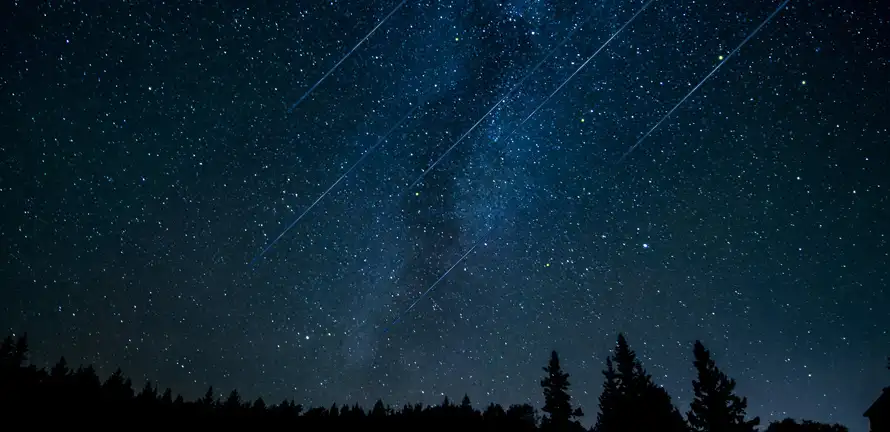
London: The upcoming return of the Leonid Meteor Shower presents a celestial spectacle worth witnessing. This event promises a stunning display of shooting stars painting the sky, reaching its peak on Saturday morning, specifically on November 18.
While the shower is an annual occurrence, some years outshine others, and historically, it has sparked some of the most intense meteor storms ever recorded.
One of the most famous instances of the Leonid meteor shower occurred in 1966, resulting in a meteor storm of extraordinary proportions, with rates surging to thousands of meteors per minute during a brief 15-minute period on November 17.
This year, however, the display might be a bit more subdued. According to meteorologist Dan Stroud, “We have a waxing moon this weekend, so there should be dark skies. There will be a band of wind and heavy rain moving across the country, but by the time the sun sets on Saturday, most of it should have cleared, and there will be some decent breaks between showers. It will be hit and miss, but there’s a chance of clear spells, especially the further east you are.”
Nonetheless, this event remains a sight worth experiencing. Here’s what you need to know to make the most of this year’s Leonid meteor shower:
Best Time to View:
The prime time to witness the meteor show is between midnight and the early hours of Saturday, November 18, just before dawn.
Ideal Viewing Locations:
While the shower can be observed from nearly anywhere, light pollution may hinder the visibility of meteors. Opt for remote locations for better viewing. As per NASA, meteors always appear to emanate away from the constellation they’re named after—hence, the Leonid shower seems to originate from the Leo constellation. Although those in the Northern Hemisphere will have a superior view, observers in the Southern Hemisphere can also catch a glimpse.
Cause of the Leonids:
The Leonid shower occurs when the Earth’s orbit intersects with that of Comet Tempel Tuttle. As the Earth crosses paths with the comet, fragments and debris fall towards our planet. The Earth’s atmosphere causes these fragments to heat up and burn, resulting in the formation of meteors. Usually, these ignited fragments burn up before reaching the Earth’s surface.
How to Witness the Show:
No specialized equipment is necessary to view the shower; it’s visible to the naked eye. According to NASA meteor expert Bill Cooke, the best way to experience this celestial phenomenon is to “go outside, find a dark sky, lie flat on your back, and look straight up.”
Hi…Just have a look at this also!






